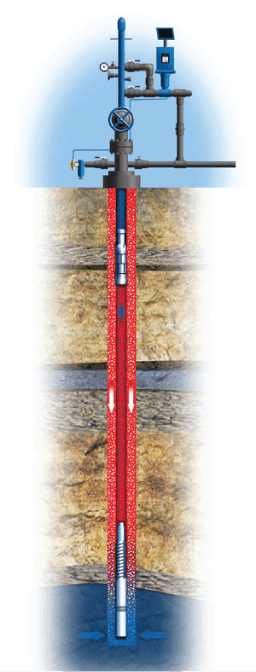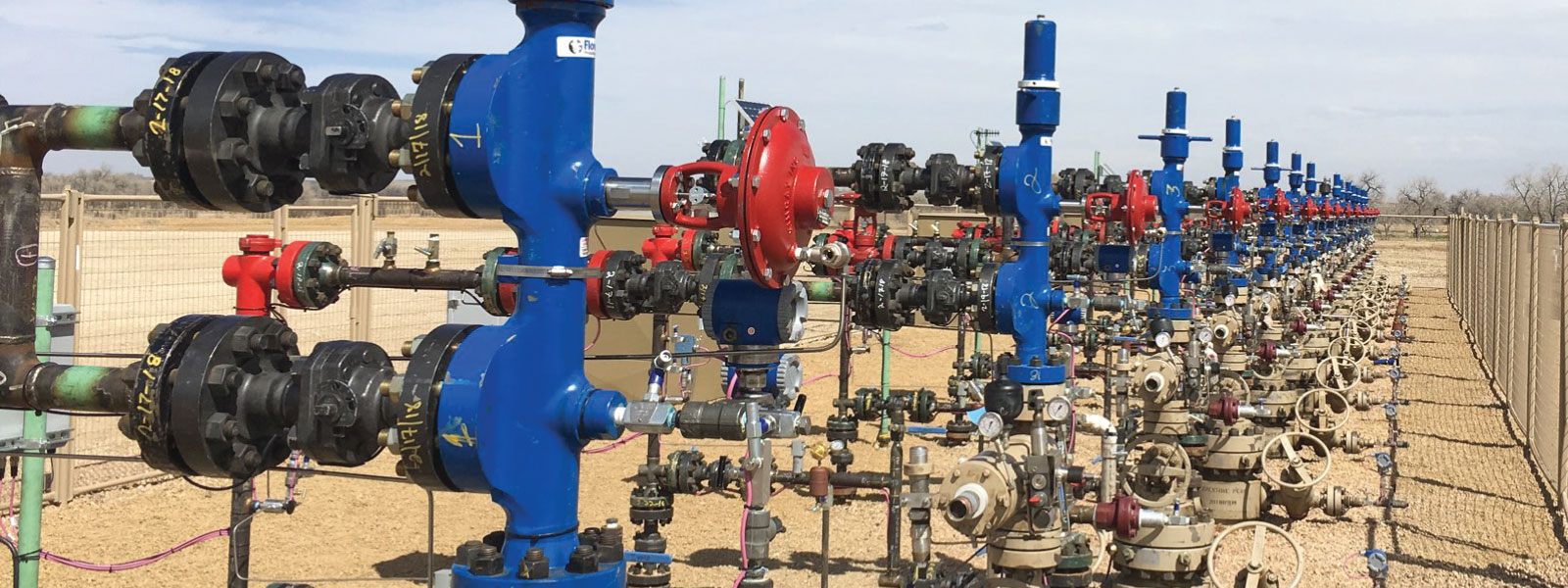Plunger Lift Solutions


Plunger lift solutions are widely used and are the most economical method of artificial lift. Plunger Lift uses the well’s natural gas, energy, or gas injection to seal around the plunger and eliminates liquid fallback. This artificial lift method of continually unloading liquids in the tubing string optimizes oil and gas production. When you add automation to a plunger lift system, you gain true supervisory control and remote monitoring capabilities to your lift system.
Plunger lift is typically used in high gas/liquid ratio (GLR) wells and is versatile enough to be used in lower GLR wells with recent advances in technology. As with other artificial lift methods, the purpose of plunger lift is to remove liquids from the wellbore so that the well can be produced at the lowest bottomhole pressure and maximum flowing potential.
A plunger lift system relies on the gas/liquid ratio to lift liquids to the surface. There are many variations of plunger types based on well production and conditions.
The main types of plunger lift systems:
Bypass and/or Continuous Flow Plungers – high gas and liquid rate wells that require very little to no shut-in time (EX: 1200 mcf/day & 400 bbls/day)
Fast Fall Plungers – high gas and liquid rate wells that require some shut-in time (EX: 350 mcf/day & 40 bbls/day)
Conventional Plungers – moderate to low rate wells that require shut-in to allow for pressure build-up to unload liquids (EX: 100 mcf/day & 10 bbls/day)
Multistage Plunger Lift – lower GLR wells that do not support traditional plunger lift applications. The gas and liquids are lifted in stages throughout the tubing string which allows the system to be operated at lower GLR’s.

Plunger Lift uses a plunger that travels up and down the tubing string and acts as an interface between liquids and gas energy. There is a bumper spring installed at the lifting point in the tubing, typically the seating nipple, which is the landing point of the plunger. When the plunger cycles to the surface, the liquids are sealed above the plunger. As the plunger arrives in the lubricator, the plunger sensor sends a signal to the wellhead controller and records the travel speed. The optimization of the plunger lift system begins through monitoring of the plunger speed. The cycle adjustments will occur based on the continuous plunger speed history, wellhead pressures, and well production. Plunger lift optimization can be a manual process completed by operators, or in advanced automated systems the cycles can be self-adjusting, limiting the time involved to optimize well production from the operator.
At Flowco we have the most experience in the industry to provide the optimal production results on every plunger lift solution and installation. Flowco provides the service and training for your personnel through the life cycle of every well.
Alternatively, one can optimize production with a combination of lift methods, such as adding continuous gas lift to a continuous flow plunger system. See hybrid solutions for more details.
We are dedicated to your success when choosing plunger lift for your artificial lift method. Contact Us and let’s begin optimizing your well production today.

